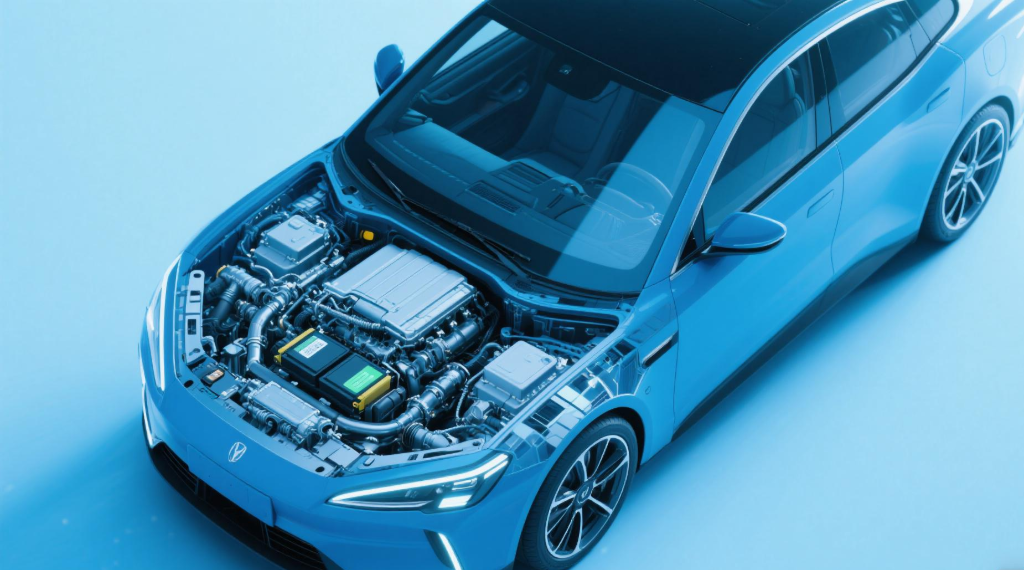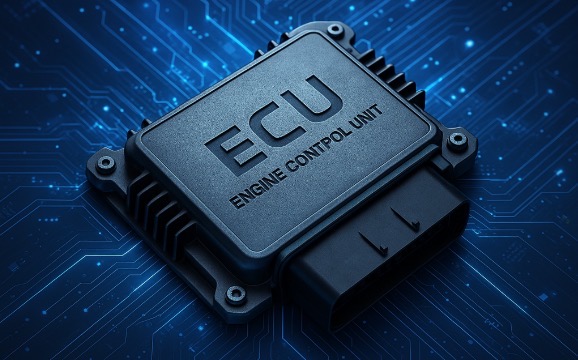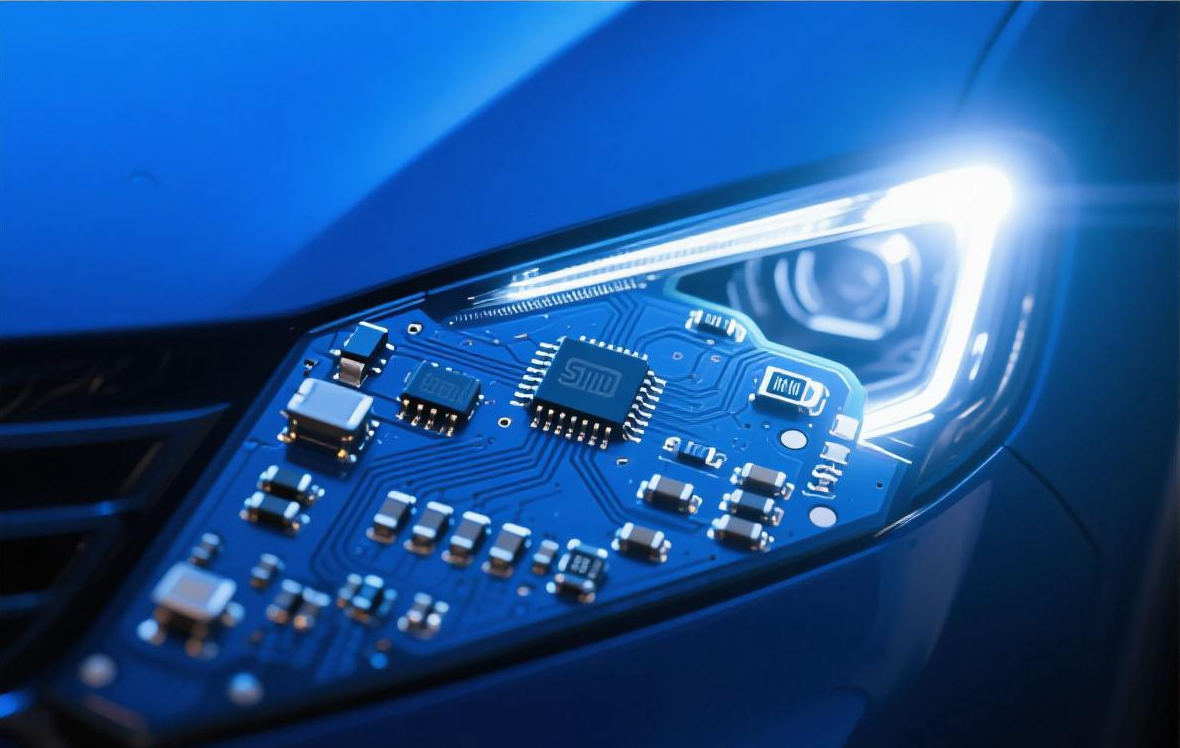CSPD Family
SHA Series
The SHA Series is a multifunctional overvoltage protection device specifically designed for various automotive and motorcycle Electronic Control Units (ECUs). The following is a detailed introduction to the SHA Series.

Series Features
Complies with ISO7637-2 (ISO16750) overvoltage requirements
Ultra-compact size
The SHA Series is designed to accommodate the space limitations of automotive electronic control boards, making it one of the smallest overvoltage protection components in the industry.
High energy capacity
The SHA Series meets the high energy demands of automotive electronic control boards, offering one of the highest energy-handling capabilities in the industry.
Product Features
Size: 0604 ~ 4032in
Operating Voltage: 12V ~ 60V
Load Dump Capacity: 1.5J ~ 160J
Operating Temperature: -55°C ~ 150°C
Compliant with ISO7637-2 , ISO16750 and JASO D001
Compliant with AEC-Q200
Series Advantages
High stability minimally affected by environmental factors
Low leakage current under high temperatures
Since automotive circuits often operate in high-temperature environments, the SHA Series incorporates a Positive Temperature Coefficient (PTC) design that effectively suppresses leakage current as temperature rises.
High safety and non-combustible
While traditional DIP solutions carry a fire risk upon failure, the SHA Series features a non-flammable design that meets the stringent safety demands of automotive circuits.
High conductivity and surge handling capability
To support automotive PCB layout and surge resistance, the SHA Series uses pure silver (Ag) inner electrodes to quickly suppress surge energy and maintain stable circuit performance.
Product Specifications
| Part Number | Working Voltage | Breakdown Voltage | Clamping Voltage | Peak Current | Load Jump (10 times) | Jump Start Voltage (5min) |
|---|---|---|---|---|---|---|
| Symbol | VDC(max.) | VB(1mA) | VC(MAX.) | IPeak(8/20μs) | WLD | V JUMP |
| 0805SA240-1R5J | 16V | 24V(±10%) | 40V | 200A | 1.5J | 24.5V |
| 0806SA240-060J | 16V | 24V(±10%) | 40V | 300A | 6J | 24.5V |
| 0806SA300-090J | 16V | 30V(±10%) | 48V | 300A | 9J | 30.0V |
| 0806SA330-090J | 16V | 33V(±10%) | 53V | 300A | 9J | 32.5V |
| 1206SA240-030J | 16V | 24V(±10%) | 40V | 400A | 3J | 24.5V |
| 1206SA240-060J | 16V | 24V(±10%) | 40V | 500A | 6J | 24.5V |
| 1206SA360-090J | 16V | 36V(±10%) | 55V | 500A | 9J | 35V |
| 1210SA240-060J | 16V | 24V(±10%) | 40V | 800A | 6J | 24.5V |
| 1210SA240-120J | 16V | 24V(±10%) | 40V | 1000A | 12J | 24.5V |
| 1210SA360-120J | 16V | 36V(±10%) | 55V | 800A | 12J | 35.0V |
| 1812SA240-120J | 16V | 24V(±10%) | 40V | 1600A | 12J | 24.5V |
| 1812SA240-250J | 16V | 24V(±10%) | 40V | 2000A | 25J | 24.5V |
| 1812SA360-250J | 16V | 36V(±10%) | 55V | 2000A | 25J | 35.0V |
| 2220SA240-500J | 16V | 24V(±10%) | 40V | 5000A | 50J | 24.5V |
| 2220SA330-500J | 16V | 33V(±10%) | 53V | 5000A | 50J | 32.5V |
| 2220SA360-500J | 16V | 36V(±10%) | 55V | 4000A | 50J | 35.0V |
| 3220SA240-800J | 16V | 24V(±10%) | 40V | 5500A | 80J | 24.5V |
| 4032SA240-161J | 16V | 24V(±10%) | 40V | 6000A | 160J | 24.5V |
| 1206SA470-030J | 34V | 47V(±10%) | 77V | 200A | 3J | 45.0V |
| 1210SA470-120J | 34V | 47V(±10%) | 77V | 500A | 12J | 45.0V |
| 1812SA470-250J | 34V | 47V(±10%) | 77V | 2000A | 25J | 45.0V |
| 2220SA470-250J | 34V | 47V(±10%) | 77V | 3000A | 25J | 45.0V |
| 2220SA470-500J | 34V | 47V(±10%) | 77V | 4000A | 50J | 45.0V |
| 3220SA470-500J | 34V | 47V(±10%) | 77V | 4000A | 50J | 45.0V |
| 3220SA470-800J | 34V | 47V(±10%) | 77V | 4500A | 80J | 45.0V |
| 4032SA470-161J | 36V | 45V~33V | 77V | 6000A | 160J | 48V |
| 0806SA360-090V | 24V | 36V(±10%) | 55V | 300A | 9J | 35.0V |
| 1206SA360-090V | 24V | 36V(±10%) | 55V | 500A | 9J | 35.0V |
| 1210SA360-120V | 24V | 36V(±10%) | 55V | 800A | 12J | 35.0V |
| 1812SA360-250V | 24V | 36V(±10%) | 55V | 2000A | 25J | 35.0V |
| 2220SA360-500V | 24V | 36V(±10%) | 55V | 4000A | 50J | 35.0V |
| 4032SA360-161V | 24V | 36V(±10%) | 55V | 6000A | 160J | 35.0V |
Application Scenarios
Modern vehicle electronic systems are highly integrated and require protection against high-voltage damage.
Between generator and battery
Generator and Battery Charging System:
The vehicle’s generator is responsible for charging the battery and maintaining a stable power supply throughout the vehicle. However, during operation, the generator may produce voltage fluctuations or current surges that can result in overvoltage. Such overvoltage can damage the vehicle’s battery and other electronic systems.
Overvoltage protection components are designed to effectively prevent these high-voltage spikes, safeguarding the battery from damage and ensuring a safe and stable charging process.
The vehicle’s generator is responsible for charging the battery and maintaining a stable power supply throughout the vehicle. However, during operation, the generator may produce voltage fluctuations or current surges that can result in overvoltage. Such overvoltage can damage the vehicle’s battery and other electronic systems.
Overvoltage protection components are designed to effectively prevent these high-voltage spikes, safeguarding the battery from damage and ensuring a safe and stable charging process.
ECU and electronic control modules
In vehicles, the ECU controls various electronic systems. Overvoltage protection components prevent power surges from damaging the ECU, ensuring that all electronic control systems operate stably and accurately.
Instrument panel and infotainment systems
High-voltage pulses from load dump events may propagate to the instrument panel, car audio, and touchscreen, damaging internal circuits or causing system crashes.
With the rise of automotive electronics, modern vehicles are equipped with numerous precision components such as ECUs, sensors, infotainment systems, and ADAS. These systems require highly stable power supply, and transient overvoltage can result in:
Damage to electronic components (e.g., chip burnout, MOSFET failure)
Data loss or corruption (affecting CAN, LIN, FlexRay communication)
Malfunction of vehicle systems (e.g., dashboard, navigation, ADAS)
Safety risks (impacting critical functions like braking and steering)
Damage to electronic components (e.g., chip burnout, MOSFET failure)
Data loss or corruption (affecting CAN, LIN, FlexRay communication)
Malfunction of vehicle systems (e.g., dashboard, navigation, ADAS)
Safety risks (impacting critical functions like braking and steering)







